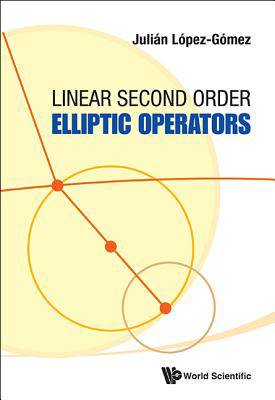
- Retrait en 2 heures
- Assortiment impressionnant
- Paiement sécurisé
- Toujours un magasin près de chez vous
- Retrait gratuit dans votre magasin Club
- 7.000.0000 titres dans notre catalogue
- Payer en toute sécurité
- Toujours un magasin près de chez vous
85,45 €
+ 170 points
Description
The main goal of the book is to provide a comprehensive and self-contained proof of the, relatively recent, theorem of characterization of the strong maximum principle due to Molina-Meyer and the author, published in Diff. Int. Eqns. in 1994, which was later refined by Amann and the author in a paper published in J. of Diff. Eqns. in 1998. Besides this characterization has been shown to be a pivotal result for the development of the modern theory of spatially heterogeneous nonlinear elliptic and parabolic problems; it has allowed us to update the classical theory on the maximum and minimum principles by providing with some extremely sharp refinements of the classical results of Hopf and Protter-Weinberger. By a celebrated result of Berestycki, Nirenberg and Varadhan, Comm. Pure Appl. Maths. in 1994, the characterization theorem is partially true under no regularity constraints on the support domain for Dirichlet boundary conditions.Instead of encyclopedic generality, this book pays special attention to completeness, clarity and transparency of its exposition so that it can be taught even at an advanced undergraduate level. Adopting this perspective, it is a textbook; however, it is simultaneously a research monograph about the maximum principle, as it brings together for the first time in the form of a book, the most paradigmatic classical results together with a series of recent fundamental results scattered in a number of independent papers by the author of this book and his collaborators.Chapters 3, 4, and 5 can be delivered as a classical undergraduate, or graduate, course in Hilbert space techniques for linear second order elliptic operators, and Chaps. 1 and 2 complete the classical results on the minimum principle covered by the paradigmatic textbook of Protter and Weinberger by incorporating some recent classification theorems of supersolutions by Walter, 1989, and the author, 2003. Consequently, these five chapters can be taught at an undergraduate, or graduate, level. Chapters 6 and 7 study the celebrated theorem of Krein-Rutman and infer from it the characterizations of the strong maximum principle of Molina-Meyer and Amann, in collaboration with the author, which have been incorporated to a textbook by the first time here, as well as the results of Chaps. 8 and 9, polishing some recent joint work of Cano-Casanova with the author. Consequently, the second half of the book consists of a more specialized monograph on the maximum principle and the underlying principal eigenvalues.
Spécifications
Parties prenantes
- Auteur(s) :
- Editeur:
Contenu
- Nombre de pages :
- 356
- Langue:
- Anglais
Caractéristiques
- EAN:
- 9789814440240
- Date de parution :
- 10-06-13
- Format:
- Livre relié
- Format numérique:
- Genaaid
- Dimensions :
- 152 mm x 231 mm
- Poids :
- 635 g

Seulement chez Librairie Club
+ 170 points sur votre carte client de Librairie Club
Les avis
Nous publions uniquement les avis qui respectent les conditions requises. Consultez nos conditions pour les avis.






